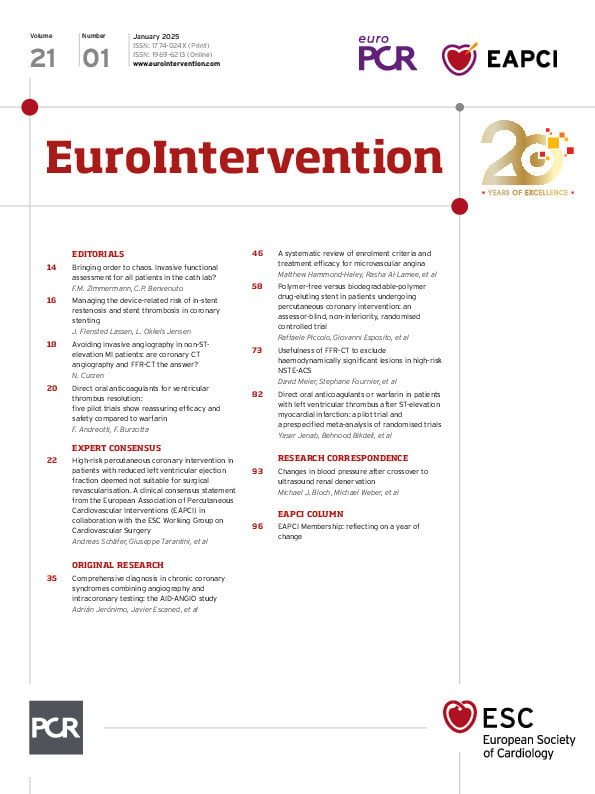Abstract
This clinical consensus statement of the European Association of Percutaneous Cardiovascular Interventions was developed in association with the European Society of Cardiology Working Group on Cardiovascular Surgery. It aims to define procedural and contemporary technical requirements that may improve the efficacy and safety of percutaneous coronary intervention (PCI), both in the acute phase and at long-term follow-up, in a high-risk cohort of patients on optimal medical therapy when clinical and anatomical high-risk criteria are present that entail unacceptable surgical risks, precluding the feasibility of coronary artery bypass grafting (CABG). This document pertains to patients with surgical contraindication according to the Heart Team, in whom medical therapy has failed (e.g., residual symptoms), and for whom the Heart Team estimates that revascularisation may have a prognostic benefit (e.g., left main, last remaining vessel, multivessel disease with large areas of ischaemia); however, there is a lack of data regarding the size of this patient population. This document aims to guide interventional cardiologists on how to proceed with PCI in such high-risk patients with reduced left ventricular ejection fraction after the decision of the Heart Team is made that CABG − which overall is the guideline-recommended option for revascularisation in these patients − is not an option and that PCI may be beneficial for the patient. Importantly, when a high-risk PCI is planned, a multidisciplinary decision by interventional cardiologists, cardiac surgeons, anaesthetists and non-invasive physicians with expertise in heart failure management and intensive care should be agreed upon after careful consideration of the possible undesirable consequences of PCI, including futility, similar to the approach for structural interventions.
Sign up for free!
Join us for free and access thousands of articles from EuroIntervention, as well as presentations, videos, cases from PCRonline.com

